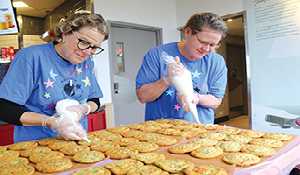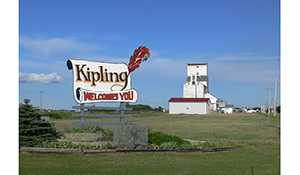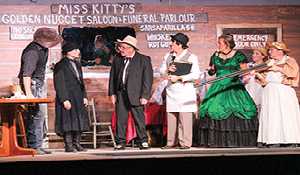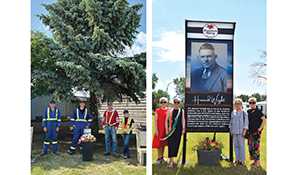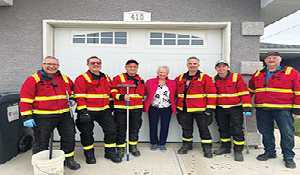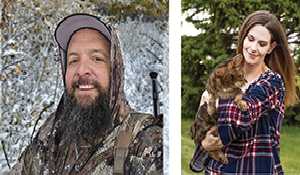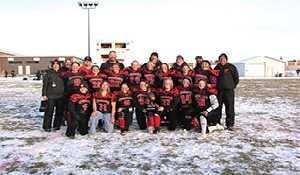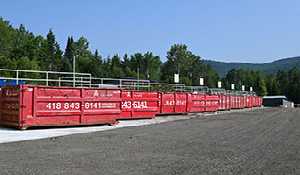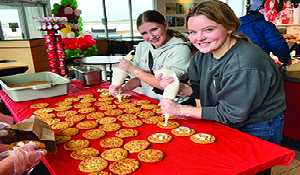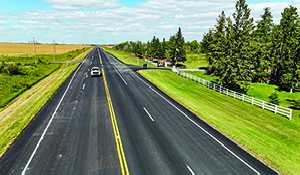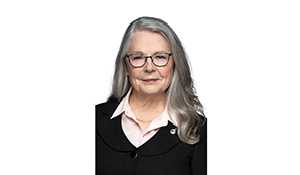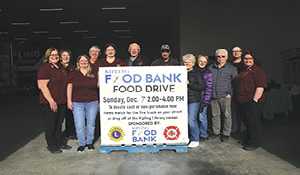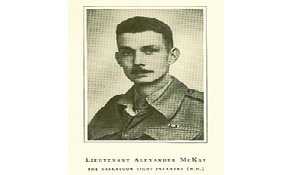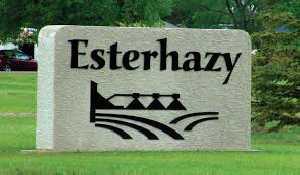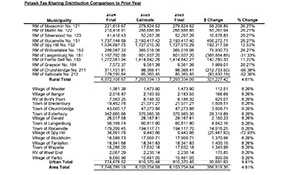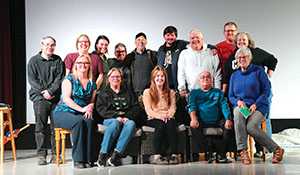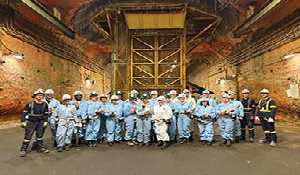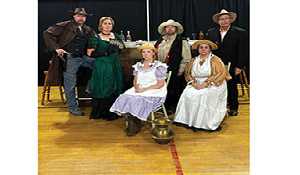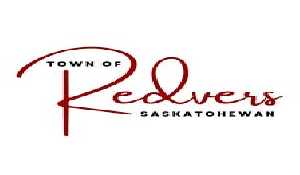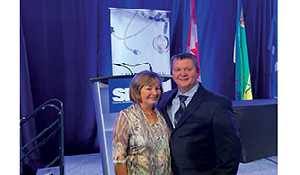Wrong again, CBC! We are far more diverse than you imagine
June 18, 2021, 10:34 am

A reader pointed out a CBC piece to me recently that is so full of ridiculous stereotypes about rural communities that they thought it was worth a laugh. The story is about how every small town has a neon-lit Chinese restaurant, about how the Chinese couple running the restaurant are the only non-white people in town, about how these cafes are even in “the smallest wind-blown Prairie towns, where main streets are struggling” and how these restaurants “have a hand in propping up small towns clinging to existence.”
Wow. Where to start?
Neon lit Chinese restaurants
The bit about the neon-lit Chinese restaurants have been true from the 1920s up to the mid-70s, but CBC is at least half a century out of date on its depiction of Asian restaurants and its depiction of small towns is something out of a city dweller’s overactive imagination.
“Their neon signs glow in almost every community—even in the smallest wind-blown Prairie towns, where main streets are struggling to hold on to grocery stores, gas stations and banks.”
Really? When I came to the area in 1988 there were still Chinese restaurants run by Chinese couples in places like Moosomin, Maryfield, and Wapella, but most of them have been gone for decades. The former Chinese cafe on Main Street Moosomin now serves Italian Food and is owned by Filipinos. The Chinese restaurant on Park Avenue in Moosomin still serves Chinese food, along with pizza, and is also run by members of Moosomin’s large Filipino community.
“You can find them under the shadow of a grain elevator, with a steady clientele of homogeneous faces—though frequently very different from those of the restaurants’ staff,” according to CBC.
What nonsense!
The CBC’s depiction of small town Saskatchewan is as accurate as if it had used 1930s American movies to describe the current state of black America.
The depiction of “wind-blown” prairie towns, where “main streets are struggling” and everyone is white except the Chinese folks who run the cafe is not only a stereotype, it is a caricature.
Is small town Saskatchewan homogenous? When I came to Moosomin a wonderful First Nations individual named Andy George was principal at the elementary school. His brother Willy was a respected high school teacher. I have to say I did not encounter a First Nations teacher in my education in Regina, but I must be wrong, because this CBC story is telling me that it’s small towns that have a homogenous white population.
I grew up in a neighborhood in Regina where I also didn’t see any Indigenous students. I also didn’t know many people from different backgrounds. I remember in Grade 3, the teacher asking everyone to tell what their fathers did for a living. (Yes, just their fathers, it was the early 1970s, we weren’t asked if our moms worked too). It got repetitive very quickly. Accountant. Lawyer. Accountant. Doctor. Accountant. Comptroller (I still don’t know what that is). Dentist. Accountant. Lawyer. Accountant. My dad was an accountant who worked in the Provincial Auditor’s office—I wondered if I should say Accountant or Auditor.
So growing up in the big city of Regina, I grew up in the most homogenous setting you could imagine. We didn’t have anyone non-white living in our neighborhood. There were a couple of Catholic families on our block but the kids went to a separate school that was literally back then called a Separate School. My kids went to school in Moosomin in a much less homogenous environment than I did. Growing up in Moosomin they went to school with people of various races, religions, and socioeconomic backgrounds, something you don’t get as much in a neighborhood-based city school.
The CBC article’s statement “homogeneous faces—though frequently very different from those of the restaurants’ staff” suggests that rural communities are full of white faces, with the exception of the Chinese folks who run the restaurant.
That doesn’t match with my reality. Moosomin has many proud members of the Métis Nation, it has First Nations residents, a Filipino community, a Honduran community, an Indian community, a Korean community, it has lots of recent immigrants from South Africa, Ukraine, Russia, from the UK. I hear more accents in a day in my office in Moosomin than I ever heard growing up in Regina.
Here in Moosomin we have businesses owned by immigrants from Poland (IMZ Service Garage) whose owner came to Moosomin via Cyprus, Ukraine (TJ’s Pizza and Ukrainian Buffet), the Czech Republic (Motel 6), Korea (Family Foods, Esso, Squire Inn, Uptown Hotel, Downtown Liquor Store), China (Strive Fitness—not a Chinese restaurant CBC, can you get your head around that?), the Philippines (GL Apparel and Promotions, Moosomin Pizza and Chinese, Isabella’s Grill, Filipino Food Mart), Cuba (Self-Made Air Solutions), the Indian subcontinent (Shell, Subway, Little Caesar’s), Honduras (Mario Z Construction), and Israel (Maya Isakov Graphic Design) among others I’m sure—those are the ones I could think of off the top of my head.
Our Catholic priest and one of our bank managers is from Africa, and we have many other managers from the Philippines and Indian subcontinent, and elsewhere.
There is a large and vibrant Filipino Community, a strong Honduran community, and this winter every Sunday afternoon cars lined the street in front of my office during the Korean language church service next door.
In my small business I have employed people from Cuba, South Africa, from First Nations backgrounds and even one American.
Some of the people running our local businesses are gay some are straight.
I’ve attended a Passover Seder in Moosomin and a sweat lodge at Pheasant Rump. I have enjoyed Cuban, Honduran, Korean, Filipino, South African and Indian food in Moosomin—not in restaurants but in homes and with small groups.
Within 24 hours of reading this CBC article mentioning the homogenous faces in small towns I sat with Arshwinder Singh in my office to finalize a sign we are making for him, including a logo for a brand new business coming to town soon, I spoke to Rigo, who comes from Cuba, who wanted to talk to me about the parade coming up—he is excited to be in it—I spoke to Marek Zdunczyk from Poland who got my air conditioning going in one of our trucks, and Kara and I went for a Ukrainian buffet lunch and had a great conversation with Roman and Maryna, proud Moosominites from Ukraine. So you are flat out wrong CBC, we are far more diverse than you can imagine.
Clinging to existence
According to the CBC article, these Chinese restaurants “have a hand in propping up small towns clinging to existence.”
Wow. Another ridiculous and outdated stereotype of rural Saskatchewan. I live in a community that, according to Statistics Canada, is growing more quickly than the cities.
According to Statistics Canada Moosomin grew by 10.4 per cent between the 2011 and 2016 censuses. That is a higher growth rate than the average rate of Saskatchewan’s cities.
Moosomin had grown by 8.9 per cent between the 2006 and 2011 censuses.
Does the description of “small towns clinging to existence” describe Esterhazy or Whitewood, or Redvers, or Moosomin, or Virden, or Kipling, or Carlyle, or Rocanville: “Wind-blown Prairie towns, where main streets are struggling to hold on to grocery stores, gas stations and banks . . . small towns clinging to existence.”
I know these towns and this ridiculous description does not describe them.
How much did the average town in Saskatchewan shrink by between the last two censuses? It didn’t. The average town grew.
How much did the average village shrink by between the last two censuses? It didn’t. It grew.
How much did the average RM shrink by between the last two censuses? It didn’t. It grew.
The CBC caricature of small towns “clinging to existence” adds to a dangerous misperception of rural Canada.
I won’t blame that all on CBC. I will blame it on Statistics Canada as well. When StatsCan refers to urban and rural Canada they are using definitions that are shockingly deceiving.
I have spoken to many politicians who make decisions that affect our lives who think that urban numbers from StatsCan refer to large cities. But StatsCan’s definition of “urban” includes communities larger than 1,000 people. So Moosomin is considered an urban centre. When the town of Redvers grew from 975 people in the 2011 census to 1,042 in 2016, that growth in rural Saskatchewan shows up in the statistics as a loss of 975 in the rural category and a gain of 1,042 in the urban category.
As a result of those misperceptions there is unequal treatment of rural communities. If a CBC reporter breaks her leg in Saskatoon she will have it treated in a hospital paid for 100 per cent by provincial tax dollars.
If she breaks her leg in Moosomin or within 75 kilometres or 100 kilometres, she will be treated in a hospital paid for two thirds with provincial tax dollars and one third with local tax dollars and fundraising.
And where do those provincial tax dollars flow from? A lot flow from resource industries, agriculture and manufacturing in rural Saskatchewan. In our area we have two massive potash mines, oil, pipelines, manufacturing, and agriculture that pay massively into provincial coffers.
The reality
The CBC caricature of rural Saskatchewan reflected in this story does not reflect reality.
Small towns clinging to existence? The towns I know are vital, vibrant, full of energy, full of new ideas, full of new businesses. The person who pointed out the CBC article to me did so after I posted a photo of Moosomin’s new labyrinth, next to Moosomin’s new Community Garden, across the road from Bradley Park, which has been continually improved and upgraded over the last 20 years, and where work to improve the park continues. At the next town council meeting I attended after I read the CBC article, the town approved a rainbow crosswalk, planning for a new playground, planning for a new BMX bike track, and started a discussion on a new skateboard park.
In my small area of the province we have 60 new production jobs at Vaderstad Langbank as it adds a second production shift at its air seeder manufacturing plant.
We have almost 2,000 employees employed directly at the two local potash mines. Extensive projects at Nutrien Rocanville will see contractors on site peak at 1,000 this year.
Does CBC report on any of this good economic news in rural Saskatchewan? Over the last year, Nutrien purchased a major mineral lease that will add 30 years of life to the Rocanville mine. The company is investing hundreds of millions of dollars in Rocanville, refurbishing the original mill, replacing original underground equipment including ore storage bins, and building its own natural gas power generating plant.
Hundreds of millions of dollars invested in rural Saskatchewan and what has CBC’s coverage been?
The most recent CBC story I can find on Nutrien Rocanville is headlined “Union predicts more than 500 temporary layoffs during closure of Nutrien’s Rocanville potash mine” from November of 2019.
Don’t expect a correction
Do I expect CBC to correct this misreporting and mischaractrization of rural Saskatchewan? No.
Back in 2018 Nutrien had a regular conference call with media releasing its quarterly financial results. This is the headline that CBC came up with from that call:


I started getting calls from people in Rocanville worried about what CBC was reporting. But it was the opposite of what was said on the call and the opposite of what everyone else was reporting. This is another headline from the same day reporting the opposite of CBC:


I spoke with a vice-president of Nutrien that day who was furious with the CBC for the false reporting, and who said he made calls to CBC in Saskatoon to try to get it corrected.
Three years later and the false headline is still there on CBC’s website.
Another incident reminds me that CBC is unlikely to correct its error or start reporting fairly on rural Saskatchewan.
A couple of years ago the Moose Jaw Times Herald stopped publishing.
A big part of its demise was an upstart newspaper, the Moose Jaw Express, which would remind you a lot of the World-Spectator—it’s full of special sections, it puts out a tourist guide, it covers its community, it has an online presence.
But the CBC coverage wouldn’t lead you to believe that an upstart publication replaced the Times Herald, and later moved into the Times Herald building. Instead CBC coverage suggested that there was no newspaper in Moose Jaw.
An exact quote from the CBC coverage, still on their website although it is untrue: “Moose Jaw is just one of dozens of towns facing a no-newspaper future.”
That is incorrect. That is wrong. That is a lie. Just go to www.moosejawexpress.com and you can see that the CBC coverage is wrong. It paints an incorrect image of my industry. My newspaper had its best financial year ever in 2020 and we are up so far this year. Different than the image many people have of our industry, formed in part by lies like this that are still there on the CBC website.
And despite the best efforts of the Saskatchewan Weekly Newspapers Association and News Media Canada, that lie is still there for all to see on the CBC website. They have been told it’s wrong and they refuse to correct it.
Last week CBC issued a non-apology after correcting incorrect information it reported on a serious matter, the death of a police officer. In the most arrogant non-apology I can image CBC said, after removing the report, after the RCMP proved it to be wrong, “We had no reason to doubt their story.” Wow. CBC also had no reason to believe their story. The role of a journalist is to find out if something is true before reporting it, not blindly repeating everything she is told.
So I don’t expect CBC to change its ways.
I don’t expect CBC to start reflecting the diversity in rural Saskatchewan.
I don’t expect it to start reporting on the economic success stories in rural Saskatchewan.
I expect it to cling to the ridiculous outdated stereotype of rural Saskatchewan as being filled with dry, dusty towns “clinging to existence.”
So I guess there is still a role for us to report on what is really going on in rural Saskatchewan.
We live in a vibrant, growing, dynamic, diverse part of the world. Our rural communities are home to people who have come to rural Saskatchewan from all around Canada and from all around the world. They have come here because they want a good life, a safe community, a great place to raise their families. I’m a person who was raised in the city, but who loves my rural community, the reality of which was not reflected in that CBC article. Tweet

